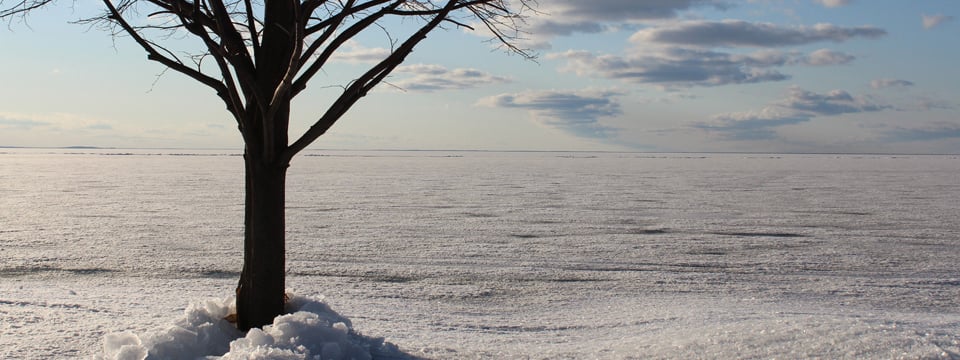Gull Lake Ice-Out Dates: Is There A Trend?

Every year excitement builds regarding when the lake will “ice out”. Anticipation of getting the dock put in and being able to bring the boat there is always a great feeling. In this article I’ll talk about how the ice out date changes from year to year in both Gull Lake north of Brainerd and in Lake Minnetonka in the Twin Cities area.
The MN DNR states that “the definition of lake ice out can vary from lake to lake. For the citizen observers reporting data, ice out occurs when the lake is completely free of ice. Or, it may be when it is possible to navigate from point A to point B. Ice out may also be when a lake is 90 percent free of ice.”
For a relatively simple shaped lake like Gull Lake ice out means that the majority of the lake is ice free. For a complicated lake full of bays like Lake Minnetonka, ice out is typically declared when a boat can navigate all portions of the lake, including passage through all channels between bays.
Take a look at the long-term data for the two lakes below which shows ice out day of the year (e.g., Day 1 = January 1 for a given year) for the years of record. Although the MN DNR has found records back to 1950 for Gull Lake, records go all the way back to 1855 for Lake Minnetonka!
It’s a surprise to no one that ice out occurs later in the year the farther north you go. For example ice out in Lake Minnetonka typically takes place between April 1st and April 30th, and in Gull Lake between April 10th and May 10th.
Using statistical tests, one can test if a trend is increasing, decreasing, or staying the same. No statistically-significant trend exists for either Gull Lake or Lake Minnetonka (see dotted trend lines on graph). Although the trend lines point downward through time, suggesting that ice out dates are occurring earlier in the year than in the past, it is such a slightly shallow line that practically there isn’t a statistically-detectable change. This is partly due to the fact that there is so much year-to-year variability in ice out dates. For example, one year the ice out could be on March 20th, and the next year on May 2nd.
However, in the past decade there may be a wider range of dates when ice out occurs compared to earlier decades. This is indicated by ice out dates varying from Days 95 to 135 since 2010 for Gull Lake (a 40-day swing), and from Days 75 to 125 for Lake Minnetonka (a 50-day swing). Whether or not this becomes the “new norm” remains to be seen.

Search Archives
Categories
Posts by Topic
- Staff News (98)
- Architecture (66)
- Funding (61)
- Civil Engineering (53)
- Education (48)
- Architectural Design (38)
- Engineering (37)
- Land Surveying (32)
- Surveying (26)
- Environmental (22)
- Commercial (21)
- Interior Design (18)
- Streets & Highways (17)
- Utilities (17)
- Water Resources Engineering (14)
- Industrial (13)
- Community (11)
- Cultural (11)
- Landscape Architecture (11)
- Sports & Recreation (11)
- Government (10)
- Aerial Mapping (8)
- Mechanical Engineering (8)
- GIS (7)
- Electrical Engineering (6)
- Structural Engineering (6)
- Senior Living (5)
- Transportation Engineering (5)
- Bridges (3)
- Site Design (3)
- Transmission & Distribution (3)
- Healthcare (2)
- Planning (2)
- manufacturing (1)
Recent Posts
-
May 06, 2024



